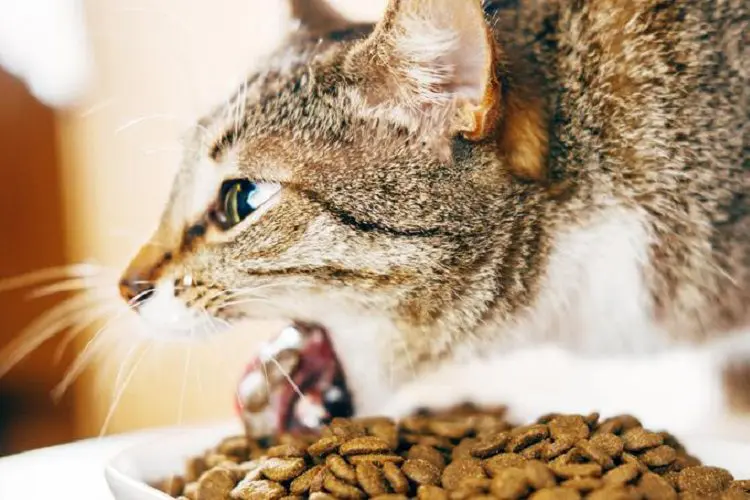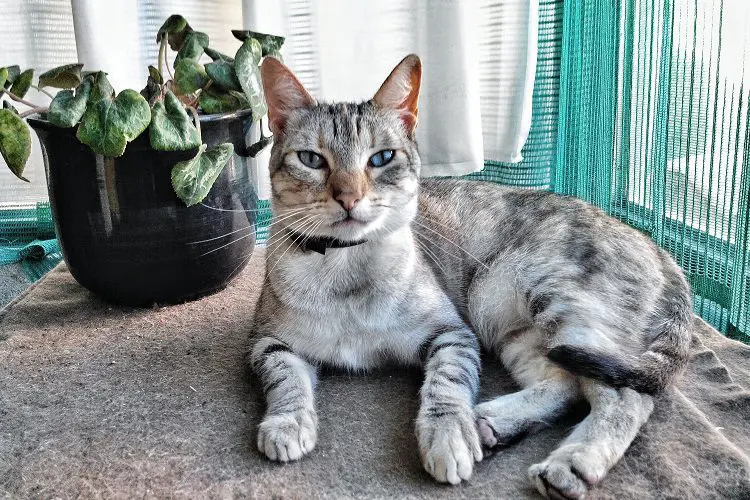Last Updated: 1 year ago
If your cat has ingested something toxic, you might need to induce vomiting. Thus, it’s handy to know how to make a cat throw up.
It can be a tricky task, but it’s important to know how to do it safely and effectively. Knowing the right steps and when to seek veterinary care is key.
So if you’re looking for information on how to make a cat throw up, read on!
How to Make a Cat Throw Up

As a cat owner, it’s important to know when you need to induce vomiting in your cat. There are certain situations where inducing vomiting can be important for your cat’s health.
For example, if your cat has ingested a poisonous substance, inducing vomiting can help remove the poison from its stomach contents.
If you think your cat has ingested something poisonous, it’s important to act quickly to flush its stomach contents. Inducing vomiting is usually most effective if done within two hours of ingestion.
Using Hydrogen Peroxide Orally
Inducing vomiting in a cat should mostly be done under the supervision of a veterinarian. The most common method for inducing vomiting is to administer hydrogen peroxide orally.
This can be done by mixing 1 teaspoon of 3% hydrogen peroxide with 1 teaspoon of warm water and administering it to your cat using an eyedropper or syringe.
The recommended dose is 1 teaspoon per 5 pounds of body weight. So, for a 10-pound cat, you would give 2 teaspoons of hydrogen peroxide.
If your cat does not vomit within 15 minutes, you may give another dose but no more than three doses should be given in one day.
After giving the hydrogen peroxide, it is important to monitor your cat closely as some cats may experience adverse reactions such as excessive salivation or difficulty breathing after ingestion.
Once your cat has vomited, it’s important to take them to the vet for further treatment.
Hydrogen peroxide works by irritating the lining of the stomach which causes nausea and eventually leads to vomiting.
It should only be used if instructed by a veterinarian since improper use can lead to serious side effects such as aspiration pneumonia and chemical burns on the esophagus or stomach lining.
Using Medications
If your cat has ingested something that could cause further harm if vomited up (such as caustic chemicals), do not attempt to induce vomiting and contact a veterinarian immediately instead.
Certain medications like apomorphine can also be used but should only be administered under close veterinary supervision due to potential adverse reactions from its use
Making a cat throw up requires careful consideration and should not be done without consulting your veterinarian first for advice on how best to proceed safely for both your and your pet’s health.
If you have any questions about when to induce vomiting in a cat, or if you think your cat has ingested a poisonous substance, please call your veterinarian immediately.
Foods That Are Poisonous to Cats
Cats are known for their curiosity, and that includes their curiosity about food. Unfortunately, there are many common human foods and substances that are poisonous to cats.
Some of these can even be deadly. As a responsible cat owner, it’s important to be aware of which foods are poisonous to cats so that you can keep them away from your feline friend.
Here are some common foods that are poisonous to cats:
- Chocolate: Chocolate contains theobromine, which is poisonous to cats. Even small amounts can cause vomiting and diarrhea, and larger amounts can cause kidney disease and liver damage.
- Coffee: Coffee, tea, and energy drinks all contain caffeine, which is poisonous to cats. Caffeine can cause an increased heart rate, seizures, and even death.
- Grapes and raisins: Grapes and raisins can cause kidney disease and failure in cats. Even a small amount can be deadly, so it’s best to keep grapes and raisins away from your cat entirely.
- Onions and garlic – Onions and garlic can cause anemia in cats. These foods should be avoided altogether.
- Alcohol: Alcohol can make your pet vomit, which in turn can irritate its GI tract. It can also cause diarrhea and even death in cats. It’s best to keep all alcoholic beverages away from your cat.
- Xylitol: Xylitol is a sugar substitute that is poisonous to cats. It can cause low blood sugar, seizures, and even death.
- Raw meat: Raw meat can contain bacteria that can make your cat sick. It’s best to cook meat thoroughly before feeding it to your cat.
- Moldy food: Moldy food can contain toxins that can make your cat sick. It’s best to throw away any moldy food before your cat has a chance to eat it.
- Milk: Milk can cause diarrhea in cats. It’s best to avoid giving milk to your cat altogether unless it’s specified for cats.
If you think your cat has ingested something poisonous, it’s important to seek veterinary care immediately. The sooner you get your cat to the vet, the better the chances are for a full recovery.
List of Household Plants Toxic to Cats

As a pet owner, you should not only be careful with household chemicals and food that are poisonous to cats.
It’s important to be aware that many common household plants can be toxic to our furry friends. Ingestion of these toxic plants can cause liver disease, kidney disease, cardiac failure, or even death.
Here is a list of some of the most common offenders:
- Lilies: All parts of the plant are poisonous to cats, and even ingesting small amounts can cause renal failure and kidney disease.
- Sago palms: These popular houseplants are actually highly toxic to cats, dogs, and humans. All parts of the plant are poisonous, and ingesting just a small amount can cause liver disease and failure.
- Dieffenbachia: also known as dumb cane, is a plant that can cause burning and swelling of the mouth and throat if ingested.
- Philodendro: These common houseplants can cause burning and swelling of the mouth and throat if ingested.
- English ivy: All parts of this plant are poisonous to cats, and ingestion can cause stomach and GI tract irritation.
- Aloe vera: The gel inside aloe vera leaves can cause vomiting and diarrhea if ingested.
- Chrysanthemums: These popular flowers are actually poisonous to cats if ingested. Symptoms include vomiting, diarrhea, and excessive drooling.
- Cyclamen: All parts of this plant are poisonous to cats, and ingestion can make your pet vomit as well as induce diarrhea.
- Kalanchoe: This plant can make your cat vomit and have diarrhea if ingested.
- Yew: All parts of this plant are poisonous to cats, and ingestion can cause vomiting, tremors, and heart conditions such as cardiac failure.
If you suspect your cat has ingested a poisonous plant, bring it to your emergency veterinarian immediately.
Conclusion
Knowing how to make a cat throw up can be an effective way to help them get rid of any ingested toxins or foreign objects.
However, it is important to note that this should only be done in certain situations and when absolutely necessary.
If you are unsure about the best course of action for your pet, always consult with your veterinarian first before attempting to make a cat throw up.
By following these steps and taking the proper precautions, you can ensure that making a cat throw up will not cause any harm to your beloved feline friend.
References:
